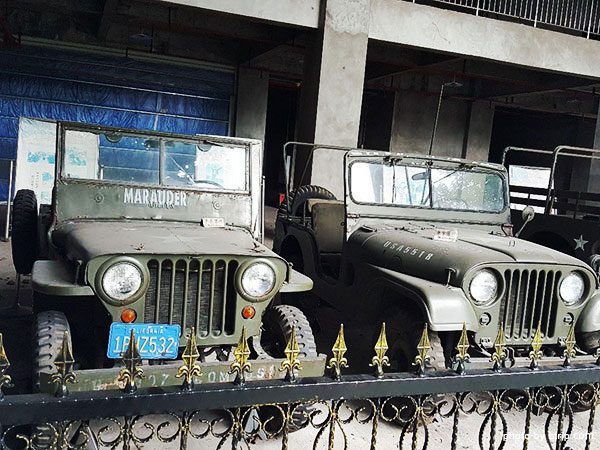General Joseph W. Stilwell Museum (Chinese Name: 史迪威博物馆) is the former residence of General Joseph W. Stilwell, who was chief commander of US forces in the China-Burma-India Theatre during World War II. In the past years, the museum has received more than 100 thousand visitors including the former Secretary of Department of Defense and former Secretary of State Mr. Kissinger.
By visiting the museum, one can understand the General common but colorful life in China. Once entering the gate, one can see the head sculpture of the General, and a tablet inscribed the words of Franklin D. Roosevelt standing next to it. Inside the museum, there are more than 200 valuable historical photos showing four themes of General Joseph W. Stilwell and China, the China-Burma-India War, the Flying Tigers, and Forever-lasting Friendship.
Historical Development
Located in the No.63 Jianglin New Road, Stilwell Former Residence was residence and office that when Stilwell in China in 1942 to 1944, which was Chongqing Mansion of Song Ziwen earlier. When repaired former residence, in order to recover interiors layout back to that year, also specially invited some Americans friends who followed General Stilwell had lived in here together. They were full of affection of here and Chongqing.
In order to commemorate the Stilwell common fight against fascist by China and the United States and made outstanding contributions to the inheritance and development of Sino-US friendship, in October 1991, the Chinese Foreign Friends Study and Chongqing Municipal People’s Government established “Stilwell research center” in Chongqing, and at the same time built “Stilwell Museum” in the former residence of Stilwell.

Stilwell Museum from May 2002 conducted a comprehensive renovation, and in March 2003, the main body project was completed, on March 19, 2003 it was open to the public.
Through the washing of history, now the Stilwell Museum, as the former’s U.N. Representative Li Daoyu said, is an all-weather apron of people-to-people exchanges between China and America. Stilwell Museum (Stilwell Research Center) engaged with communicative activities with the United States in the form of folk culture, education, military history and other aspects of the academic research and exchanges. Every year, Stilwell Museum will usher in a variety of Chinese and American communication exchanges activities, the people who visit Stilwell Museum in addition to American students, scholars, world warⅡveteran, also politicians and military personnel.
Main Buiding
The body of the museum building originally is Stilwell’s mansion. After the door is the guard room, display with desks, wooden chairs and old telephone that adjutant Yang Mengdong used. Walk on the left is the conference room, military map was hanging on the wall next to a tiny motion-picture machine, the phonograph, and various military materials. Besides, next to conference room is a small retiring room and living room; on the right is the general Stilwell’s office, bedroom, there is also the most advanced radio, telephone at that time, etc. In front of the gate was Stilwell restaurant, on the dinning table there is still put western-style knife and fork, dishes, etc., the outside of the restaurant is the kitchen and servants rooms of residence.
Residence ground floor is where entourage lived and ordnance room at that time. Now, here is turned into the several exhibition halls. More than 200 precious historical pictures, according to the time order, display for us to show the “Stilwell and China”, “Beat on the Battle of Indo-Burmese”, “Air force Flying Tiger”, “Hump Flight”, “U.S. Yan’an Observation Group”, “Friendship Live Forever” and so on six aspects, recorded the Stilwell indissoluble bond with China. Here, we not only see the Stilwell assisted the Chinese government and people and the common fight against the Japanese fascist aggression of glorious deeds, also see he was on the tail from wagging the dog, pay attention to the interest of whole.
How to get to General Joseph W. Stilwell Museum
You may take light rail and getting off from Liziba Station and then walking for 500 meters.
